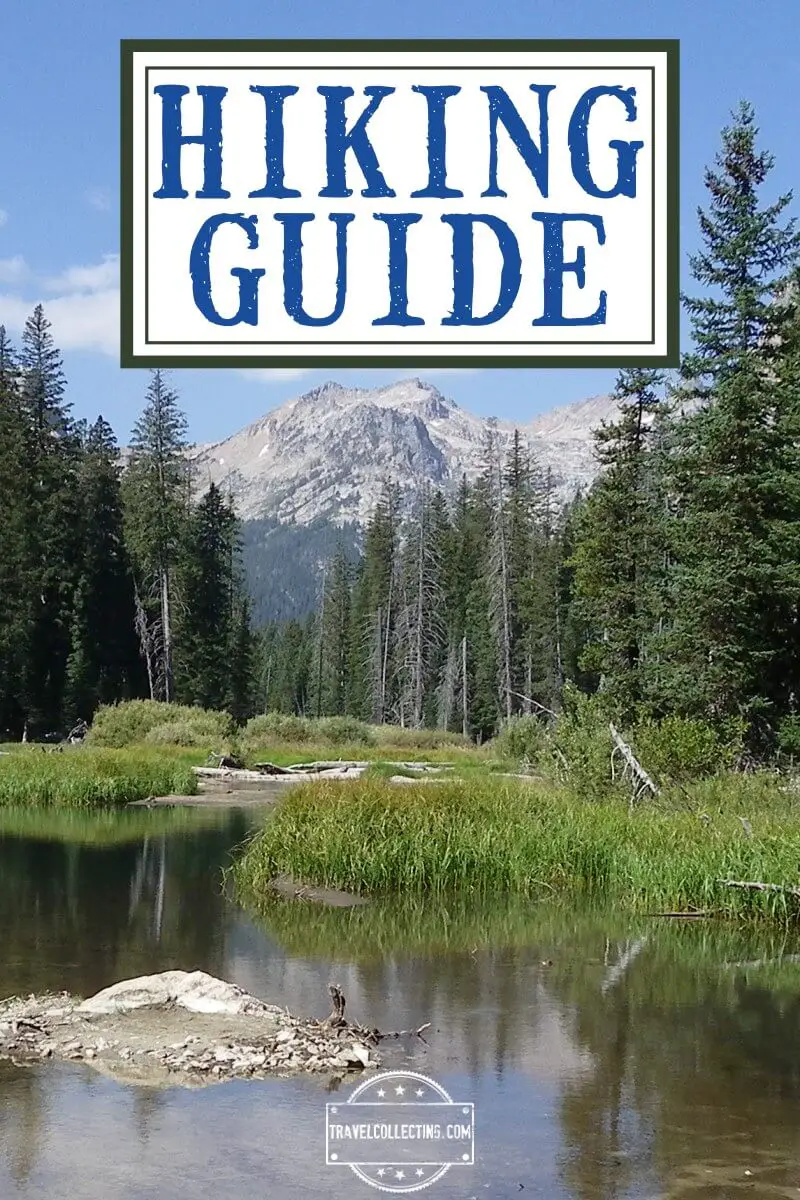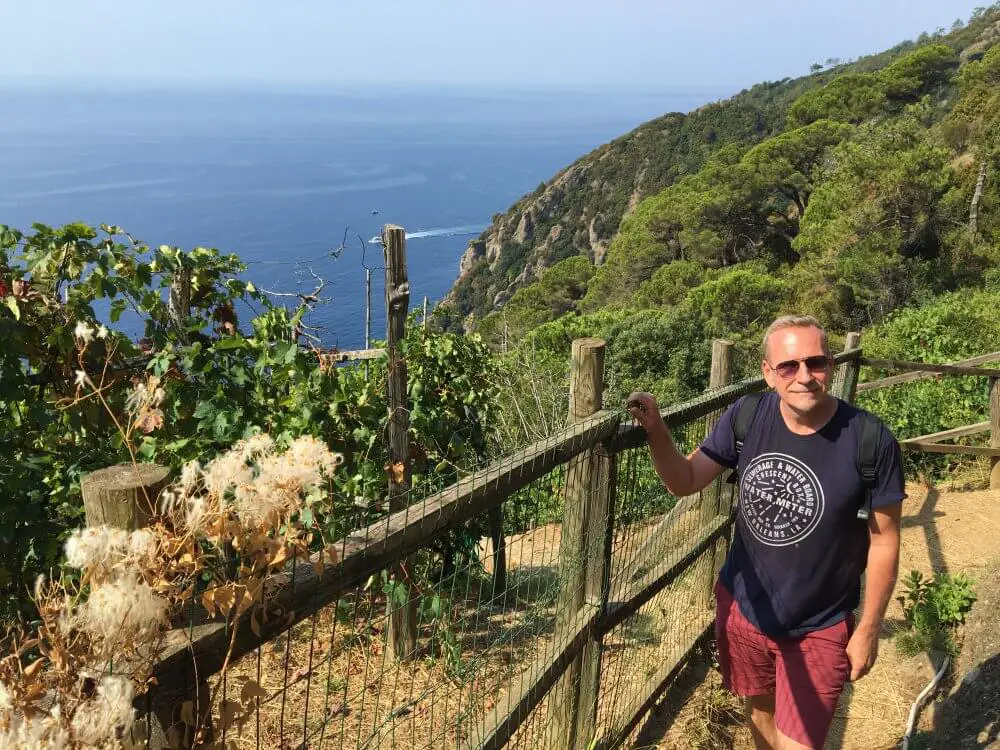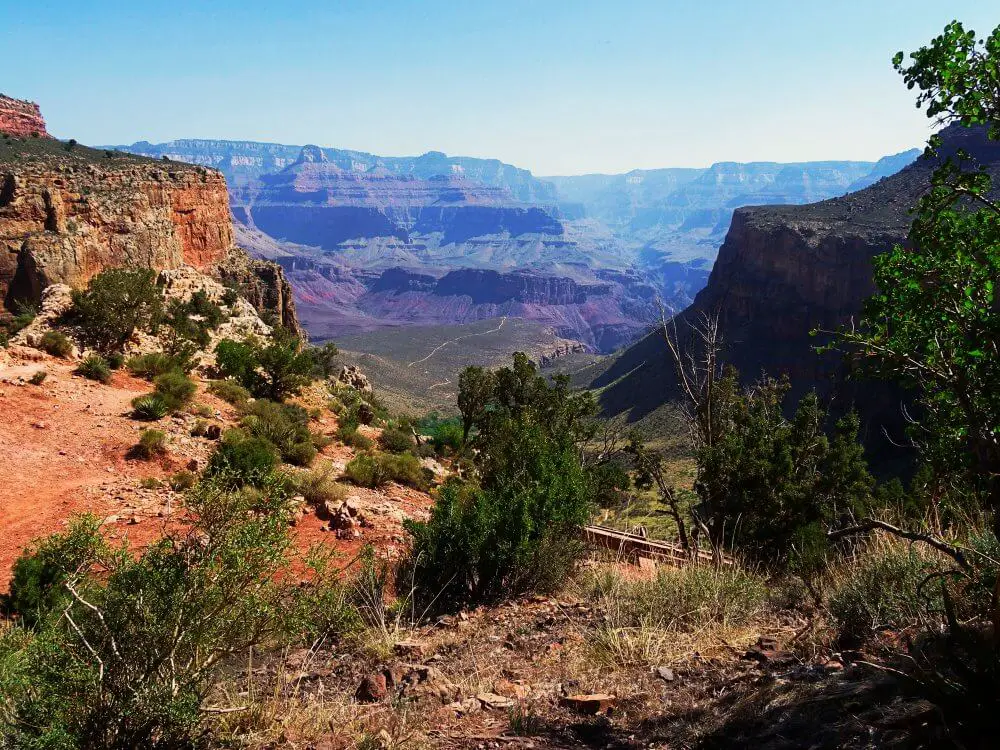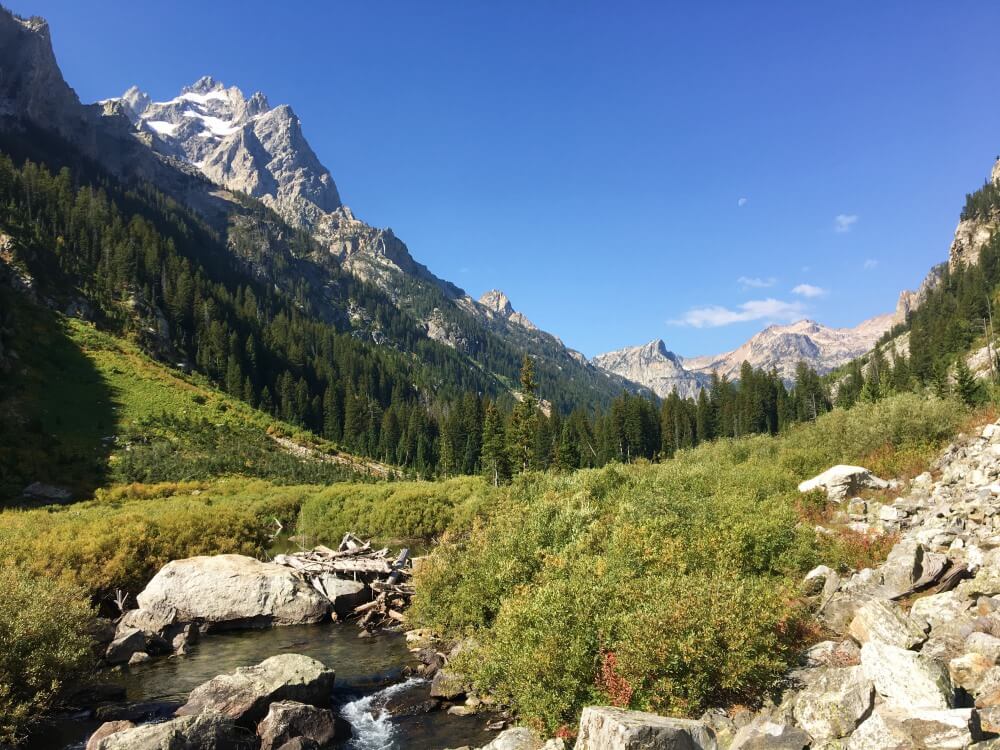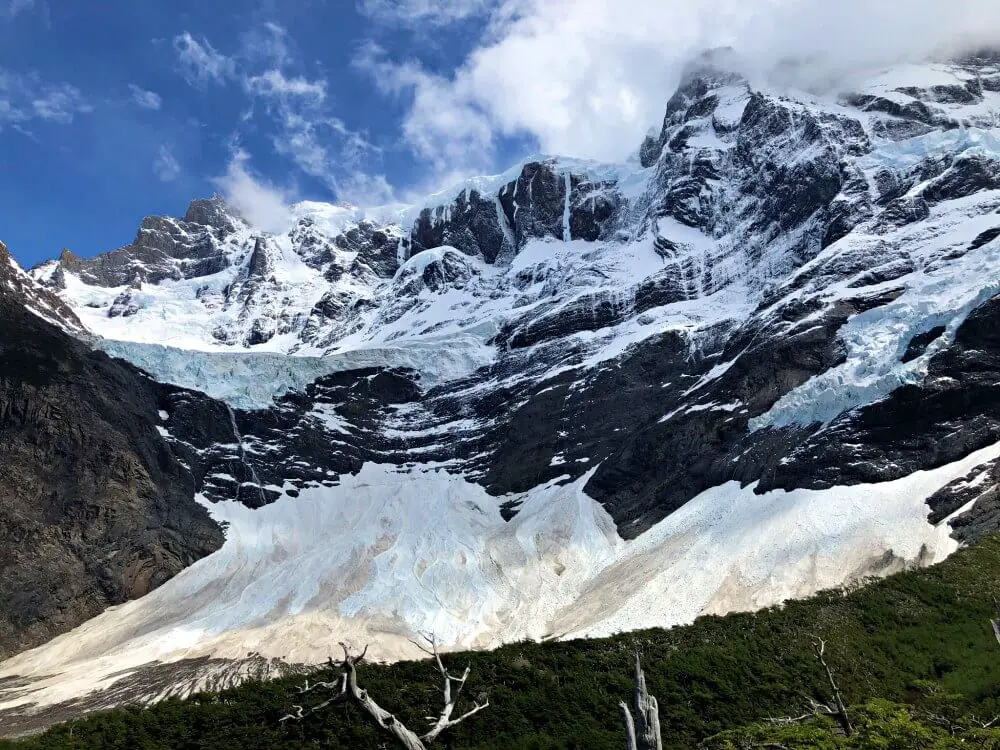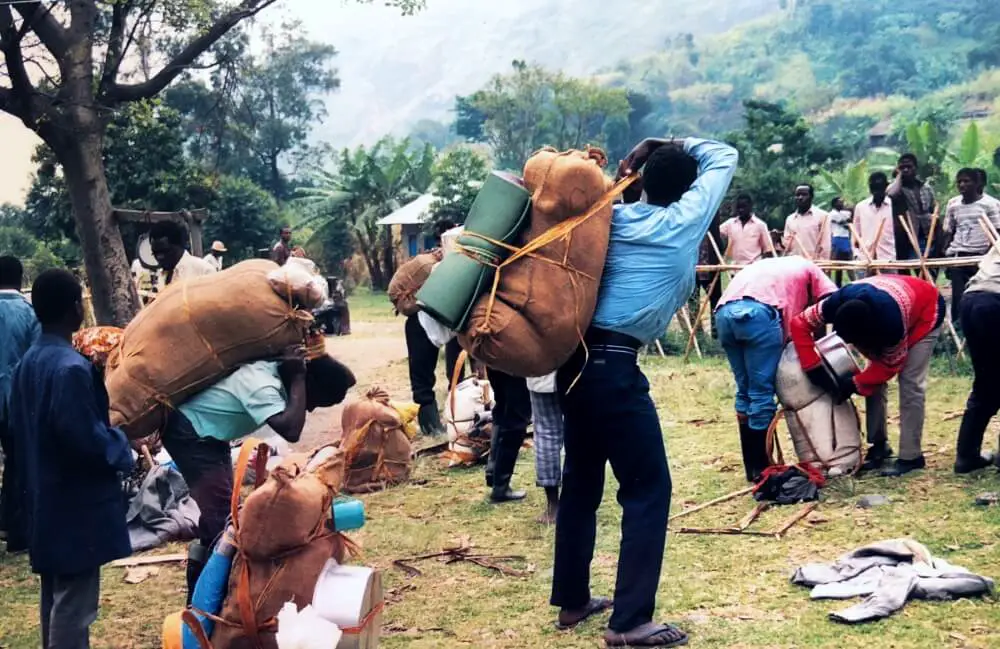When I was in Arches National Park, at the start of the ranger-led Fiery Furnace hike, the ranger asked us all why we were there. The reasons given were as varied as the number of people on the hike. Some people appreciated the connection to nature, others just loved being in the great outdoors, yet others liked the physical activity.
Please note that some of the links below may be affiliate links. At no additional cost to you I earn a small commission if you make a purchase. Read my Disclaimer for more information.
Why hike? (Reasons to go hiking)
What about you? This may not even be a question you ask. You may already love it. But I didn’t. Not for the longest time. When I was a kid growing up in Australia, I wasn’t very fit and “bush walking”, as we called it, seemed difficult and uncomfortable and – dare I say it? – a bit boring.
Well, things have changed since then. I don’t consider myself super fit, but I do try and stay in reasonable shape, mostly so that I’m not limited by my body to what I can do.
For me, hiking allows me to see amazing things that I couldn’t otherwise see and to experience the incredible beauty on this planet in a way that is not possible any other way.
Whether it is hiking up to a glacier in Patagonia, on a glacier in the Rockies, out of the Grand Canyon, through a canyon in the Grand Tetons, or through a river in Zion National Park, I would never have been able to experience the power and beauty of these places if I hadn’t been hiking.
For a fun summary, read about the different types of hikers you may come across out on the trails.
This hiking guide
This hiking guide is an overview of key aspects to hiking to get you started on your next (or first) hiking adventure, as well as a summary of the hiking posts on this blog. As always, if you have additional suggestions, tips or experiences to share, comment below. And if you are looking for a gift for a fellow hiker, check out this gift guide for hikers.
Things to consider when choosing a hike
Not all hikes are equal. The key to great hikes is to pick a hike that is within your ability level in a hiking area that excites you.
For inspiration ideas, check out this guide to choosing your next adventure.
There are many factors to consider before you set out. Thinking about all of these things will help make sure that you have an awesome time.
1. Length
Hikes can be out-and-back or a loop.
You can avoid backtracking on some one-way trails by arranging a pickup or drop off at the start or end point, or by catching public transport at both ends of the trail. The hike between Portofino and San Fruttuoso in Italy is a great example of this.
Length is not the only thing to consider, though. Keep in mind the next factor too.
2. Elevation change
Many hikes can involve quite a lot of climbing or uphill or downhill walking. Even more challenging (with spectacular scenery as a huge payoff) are high altitude treks like hiking Colorado’s Fourteeners.
Some trails involve a lot of stairs (like the amazing Watkins Glen Gorge Trail in New York), but if you take it slow, even they are definitely doable.
I recommend using hiking poles can help take pressure off your joints.
3. What you’ll see along the way
There are many beautiful hiking trails through forests, along the sides of mountains on through valleys or even through fields of wildflowers.
4. The destination
Many of the best hikes end at a viewpoint/ lookout (like the French Valley hike in Chile), a waterfall or some other spot where you can sit and relax.
5. Where it is: Local hikes vs. hiking on vacation
Local hikes are easy to get to and you can go home at the end of the day. If you are lucky to live in an area with beautiful hikes and great local hiking trails, then this is no fuss and easy.
However, many awesome hiking locations are in far-flung places and you will choose to go there specifically on your vacation. Hiking vacations do require some preparation and may not be for everyone. If hiking and camping are not your thing, you will need to look for good hiking trails near a hotel at least.
6. Level of difficulty
Hikes are typically classified as easy, moderate or challenging/ difficult. This is influenced by the length, elevation, weather, and terrain.
7. Terrain
There are great hiking trails in all sorts of places. Find hikes that are within your comfort level. One person’s fun can be another person’s misery.
8. Climate
There are great places to hike all around the world, but the climate, along with the terrain influences the things hikers need.
For example, there are many good hikes in the desert, but you will need lots of water and sun protection. Winter hiking can be a lot of fun, but appropriate warm weather gear is essential (check my winter hiking gear list for all you’ll need). If you are hiking in tick country, you will need to know about tick safety.
Note that weather can often change rapidly and you should never assume that the weather will stay the same throughout the day. I always pack a windbreaker and lots of water even if they don’t seem necessary when I set out. With hiking, it truly is better to be safe than sorry.
9. Equipment needed
The hiking supplies you will need for a day hike are quite different from those needed for multi-day wilderness hiking. If you are doing a multi-day hiking, you will need to invest in some eco-friendly camping gear.
10. How clear the path is
Most of the best hiking trails are easy to follow, but this is not always the case.
There are times when hiking trail maps are essential.
Unless you know for sure that it is a very clear path, consider getting a map, compass, and/ or GPS. Hiking maps are usually sold in the area, or can often be found online.
If you’re doing backcountry hiking, which means there are no trails, you will want to know how to navigate using a GPS, have all the right gear, and know how to survive in the wild. Read up on survival in the wild before you head out if you’re new to back country hiking.
11. Best time of day (or night)
You need to not only think about where to hike, but also when
Sometimes you need to hike at night – especially if the main reason for the hike is watching the sunrise from the top of the mountain you are climbing. E.g. Most people climb Mt Fuji in Japan and Mount Sinai in Egypt at night in order to be at the top in time for the sunrise. If you are hiking at night, a headlamp is an essential item.
12. Single day vs. multi day
Most hikes are single day hikes; however, you can also do multi-day treks. Obviously, these involve a lot more planning, as you either need to carry a tent with you or check in advance that there is a refuge or hut on the trail that you can use.
You will also need to carry your food unless you have a porter carrying your stuff. This is common on some hikes. For example, many Inca Trail treks have porters to carry your food and tent. This is also true on the Rwenzori Mountains trek in Uganda.
Having porters carry your belongings and supplies makes the hike more enjoyable for you as well as providing employment for local people, which can help make the local community more invested in preserving the environment.
However, some people prefer to save money and carry everything themselves.
13. Alone or with a guide
You need to decide whether to do the hike on your own or hire a trail guide.
Sometimes guided hiking trips are the only possibility or guided hiking tours are just easier. Guides typically know the trails very well, so can help you avoid hard parts, show you the best places to go hiking, prevent you getting lost and give you additional information along the way.
For multi-day hikes, if you book through a company with a guide and possibly a porter, make sure you check what their tents are like. When I did the Inca Trail, I provided my own tent (though a porter carried it) and when it rained overnight, mine was the only tent in our group that stayed dry.
14. Your level of fitness
The best trails for you to hike are those within your level of fitness. There is nothing worse than being miserable because you’re in pain.
15. Registration
For hikes that have an element of danger, or if you are in a park where the rangers want to keep track of everyone on the trails, you may need to register before you set out.
It’s actually a good idea to let someone know where you are going even if it isn’t technically requited. Things can happen when you hike and it is always good to have someone know where you are.
16. Permit
For some areas where the rangers want to control the number of hikers, or want to make sure that they know exactly where everyone is, this can go even further and you need to get a permit.
If you need a permit, check how and where you can get it.
17. Impact on the environment
Every time you go into nature, you impact the environment. You may decide some environments are so fragile it is best to avoid them all together.
18. Who you’re hiking with
You may choose to hike alone. Or you may choose to hike with family or friends.
If you are hiking with young kids, there are things you will need to consider. Check out some useful tips for hiking with kids. You may end up hiking with kids who go different speeds. It’s also worth considering online resources for planning family hikes.
For Beginner hikers
Are you new to hiking? I am hardly a hard core expert, but I have fallen in love with hiking and have hiked in many places around the world and have created some useful resources for novice (and perhaps even some more experienced) hikers:
For a comprehensive list of hiking tips, check out my Beginners Guide to Hiking.
Read essential basic hiking etiquette here.
Get a list of the hiking gear that beginner hikers need for safety and comfort.
If you liked this post, please share the love and Pin it to your Hikes Board!
About the author

James Ian has traveled to 83 countries and all 7 continents. He is passionate about experiential travel, i.e. meaningful travel that actively engages with the environment and culture. He helps people have similar experiences that involve active participation in activities and festivals; engaging with the local food and handicrafts through lessons and food tours; and interacting positively with environment by hiking, riding, rowing, diving and low/no impact animal encounters.
Travel Collecting is a participant in the Amazon.com Services LLC Associates Program. As an Amazon Associate I earn from qualifying purchases.

